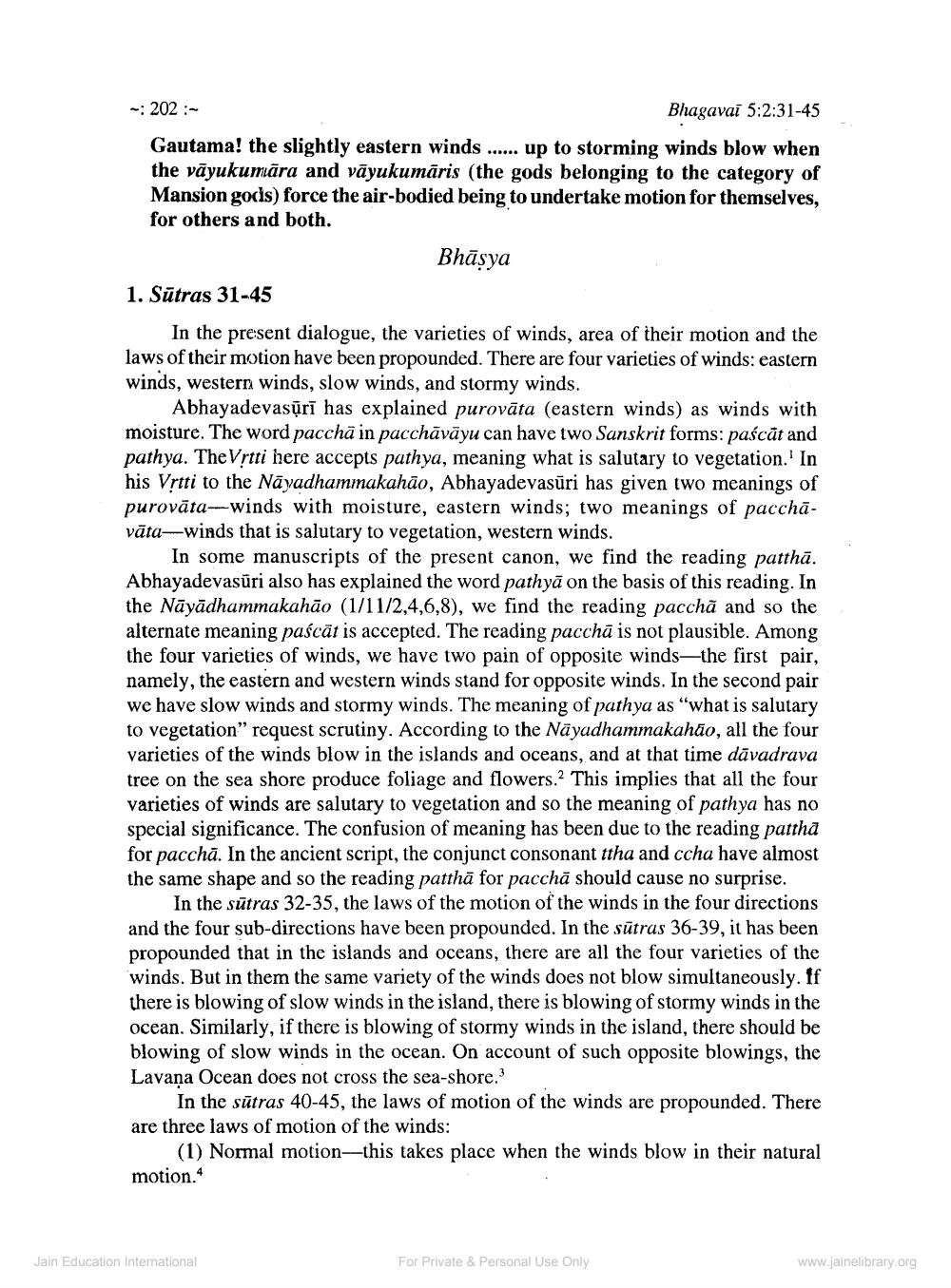________________
- 202 :
Bhagavai 5:2:31-45 Gautama! the slightly eastern winds .... up to storming winds blow when the vāyukumāra and vāyukumāris (the gods belonging to the category of Mansion godis) force the air-bodied being to undertake motion for themselves, for others and both.
Bhāsya
1. Sūtras 31-45
In the present dialogue, the varieties of winds, area of their motion and the laws of their motion have been propounded. There are four varieties of winds: eastern winds, western winds, slow winds, and stormy winds.
Abhayadevasõrī has explained purovāta (eastern winds) as winds with moisture. The word pacchã in pacchāvāyu can have two Sanskrit forms: paścât and pathya. The Vrtti here accepts pathya, meaning what is salutary to vegetation.' In his Vrtti to the Nāyadhammakahāo, Abhayadevasüri has given two meanings of purovāta-winds with moisture, eastern winds; two meanings of pacchāvāta-winds that is salutary to vegetation, western winds.
In some manuscripts of the present canon, we find the reading patthā. Abhayadevasūri also has explained the word pathyā on the basis of this reading. In the Nāyādhammakahāo (1/11/2,4,6,8), we find the reading pacchã and so the alternate meaning paścät is accepted. The reading pacchā is not plausible. Among the four varieties of winds, we have two pain of opposite winds—the first pair, namely, the eastern and western winds stand for opposite winds. In the second pair we have slow winds and stormy winds. The meaning of pathya as "what is salutary to vegetation" request scrutiny. According to the Nāyadhammakahão, all the four varieties of the winds blow in the islands and oceans, and at that time dāvadrava tree on the sea shore produce foliage and flowers. This implies that all the four varieties of winds are salutary to vegetation and so the meaning of pathya has no special significance. The confusion of meaning has been due to the reading pattha for pacchā. In the ancient script, the conjunct consonant ttha and ccha have almost the same shape and so the reading patthā for pacchā should cause no surprise.
In the sūtras 32-35, the laws of the motion of the winds in the four directions and the four sub-directions have been propounded. In the sūtras 36-39, it has been propounded that in the islands and oceans, there are all the four varieties of the winds. But in them the same variety of the winds does not blow simultaneously. ff there is blowing of slow winds in the island, there is blowing of stormy winds in the ocean. Similarly, if there is blowing of stormy winds in the island, there should be blowing of slow winds in the ocean. On account of such opposite blowings, the Lavana Ocean does not cross the sea-shore.
In the sūtras 40-45, the laws of motion of the winds are propounded. There are three laws of motion of the winds:
(1) Normal motion—this takes place when the winds blow in their natural motion."
Jain Education International
For Private & Personal Use Only
www.jainelibrary.org




